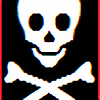HOME | DD
 WormWoodTheStar — PzKpfw V Panther
WormWoodTheStar — PzKpfw V Panther

Published: 2011-02-09 17:53:50 +0000 UTC; Views: 2088; Favourites: 23; Downloads: 11
Redirect to original
Description
The German invasion on Soviet Union in 1941, which was ment to be a fast victory over "Slavic sub-humans" turned out to be long and bloody campaign.The main factor behind the high losses among German AFVs were two Soviet tanks - medium T-34 and heavy KV-1. Especialy the first was a threat to German tanks. Its sloped armour was more durable, and it's 76,2 mm gun could knock out most of the Hitler's vehicles. According to one of the tankmen, "I looked at T-34, then at our tank (Panzer IV) - and I thought that our machine looks like a match box (...)". General Heinz Guderian, whose brilliant blitzkrieg tactics led to a fall of central and western Europe to the Nazis, claimed that the best way to cope with this threat was to copy the T-34 into new, German machine.
Of course copying the "sub-human's" tank wasn't an option for the III Reich. Germans indeed used large numbers of captured T-34s (PzKpfw T-34(r)), but it was only a temporary solution. Expert decided that the most important features of T-34 are its sloped armour and wide tracks. The first feature increased the overall thickness of the armour and caused the shells to ricochette, and thanks to the wide tracks the 27-ton T-34 could move with max. speed of 55 km/h over most of the surfaces, while the narrow-tracked German tanks would stuck in the mud, ice or water. German tank designers decided to incorporate these features into their new tank.
The first prototype appeared in April 1942, and was called "VK30.02". It was delivered by Daimler-Benz and was almost direct copy of T-34. It weighed about 35 tons and was to be equipped with L/70 gun (75 mm). However it turned out that the turret isn't large enough to fit it inside. Another company, MAN, proposed much more sophisticated tank with overlapping wheels and bigger hull. While the Daimler-Benz seemed a better choice due to the low costs and good combat characteristics, MAN had improved its design and in May 1942 Hitler decided that the MAN's tank will go into production.
While MAN planned to achieve production rate of 450-600 tanks per month, an average number of Panthers produced had never exceed 200. The final product had a weight of about 45 tons and had a maximum armour thickness of 80 mm (gun frontal plate - 100 mm) - increased from initial 60 mm by Hitler's order. It used the same Maybach HL 230 P30 V-12 gasoline engine that powered the Tiger tank. However due to the Panther's lower mass the tank had a better power-to-weight ratio. Nevertheless, it wasn't the most reliable power source in Germany; it was prone to overheat (the engine compartement was designed to ford the rivers underwater) and many Panthers were damaged or destroyed due to the engine fire. The overlapping wheels designed was also problematic. In case the inner wheel was damaged, five (!) had to be removed to repair it. On the battlefield, it was very serious issue. But at least the Panther did not share one of the most serious problems of Tiger tank: its width was just below the loading gauge limits. The driver had to place it on platform with surgical accuracy, but at least the Panther did not have to be fitted with secondary, narrower tracks, which consumed time and limited the amount of Tigers on the battlefields.
The first Panthers were delivered to Panzer Abteilung 51 (51st Tank Battalion) on January 1943 and Pz.Abt.52 on February. The first Panthers left the factories without working on the "infancy issues". Engines and hydraulics were leaking, pieces were breaking, fires were breaking out almost every day.
The Panthers debut was to be the largest tank battle in history - the battle of Kursk in 1943. But it wasn't the best start for a new tank. Due to the mechanical failures out of 184 Panthers send into battle, 156 were lost. As of August 11th, only 9 Panthers were aviable. Nevertheless, the Panthers showed superior firepower, being able to knock out any Soviet tank, incluing the heavy KVs from 1,500-2,500 meters. When the "infancy problems" were removed, the Panther became one of the most feared tank in the world.
On the Western Front, where mostly thin-armoured Shermans were used, Panther would show its true potential... if not for its massive size. If you've ever seen the "Kelly's Heroes", you may remember the scene where Tiger tank was cornered in a narrow street and couldn't rotate it's gun at Oddball's tank, because it was blocked by wall and tree. This was actualy very often scenario, because in narrow-street French villages the Panther could not be deployed. They performed better in open areas, but in Normandy, most of the terrain is covered with bocage - a wild labirynth of hedgerows which proved a deadly trap for the tanks. They were springy enough to resist the tank's weight, and when it climbed over it, it exposed its thin-armoured belly. It was a perfect opportunity to use any weapon, not necessarily anti-tank, to destroy it.
Panther's chassis was used for many specialised vehicles, the best known of which were Jagdpanther - the heavy tank destroyer armed with 88 mm gun - and Bergepanther recovery vehicle (Berge - rescue, recovery). Bergepanther was basicaly a turretless Panther tank, with large wooden equipment box and crane on the hull, and also an earth spade at the back of the vehicle. It could succesfuly recover smaller vehicles, but in case of other heavy tanks, especialy Tiger II, its engine could easily break down. Some of the Panther turrets were used as the artillery pieces in fortifications. They were called simply Pantherturm (Panther turret) and were either manufactured or improvised. Sometimes even the whole hull was used as static artillery, especialy if the tracks or road wheels were destroyed and could not be replaced.
Interestingly, the Panther's career did not finish with the World War II. It was simply too good to resign from it, especialy if it was abandoned due to mechanical failures or lack of fuel. Red Army used some of them, with giant red stars painted to avoid the "friendly-fire" accidents. After the liberation of France, the recreated French army was given some 50 working Panthers and created the 503rd Tank Regiment.
Ironicaly, Panther's biggest problem - mechanical unreliability - led to the situation when many Panthers were abandoned by their crews due to the mechanical failures and were captured by Allies. Thanks to that Panthers did not share the fate of Tigers, where there are only 6 Tigers left and only one in working condition. As of 2010 there are 6 original Panthers in working condition (!) and 23 others not working (6 of them are wrecks, 2 will be reconstructed) all across the world.
...not in Poland of course. The communist government of 1945-1989 didn't want any German equipment to be left in Poland. In 1945 there were several Panthers left in Poznan itself, after the heavy fights for the city. One of them was used by Land Forces Training Center, then send to Olsztyn for renovation. The turret was unsecured and during the transport, it rotated and clipped several power lines. The damages to the Panther itself were moderate and possible to repair, but it was send... for scrap




 As if it wasn't enought, the driving wheels were used as... [link] The closest thing we have now is a Panther's replica based on T-55 tank chassis. One of the working Panthers was excavated from a lake in Poland and restored in California, where it will surely stay forever.
As if it wasn't enought, the driving wheels were used as... [link] The closest thing we have now is a Panther's replica based on T-55 tank chassis. One of the working Panthers was excavated from a lake in Poland and restored in California, where it will surely stay forever.++++++++++++++++++++++++
Aaah, Revell. Little things can joy my heart as much as the black boxes* with characteristic yellow letters on blue background. This was a gift from my mom when she returned from her trip to Germany. When she asked through phone what would I like, I couldn't think of any alternative. Panther was an obvious choice.
As I showed in my gallery before, two Panthers were captured during Warsaw Uprising. The one named "Magda" had a large Polish chessboard painted. I wanted to make this version, but the hull wasn't as big as I thought, so I decided that rather than trying to risk a bad paintjob (and a lot of scrubbing the paint off later) I'll just make a normal tank.
Interestingly, Revell gives us parts for two versions - late and early - but only decals for early version. I prefered the late version more, however, and here we have a late Panther with early painting and decals. Sure enough you can make a mixup - in the wartime it's not uncommon to have late turret placed on early hull or other way round.
As you can say from the road wheels paintjob, I don't quite deserve for the title "Master of the Brush"





Weathered with brush, but I went way too far. I should stop with one brushing.
The tank commander does not belong to set, it comes from Italeri's Panzer I Ausf B. in 1/72.
* blue a little less, 'cause these are for air vehicles. Black are for land and marine-green are for naval ones.
Model: Revell
Paints: black Pactra for road wheels, everything else is Humbrol
Scale: 1/72
Related content
Comments: 17

ever heard of the british captured panther Cuckoo? ;D
👍: 0 ⏩: 1

I might be wrong, but I think I've seen a kit which included decals for that Cuckoo version (the Panther I made also had French decals). But it's not much, just a star on the turret and the name Cuckoo.
👍: 0 ⏩: 1


(also if you are interested please look at my 3 new uploads? :3 all are tanks)
👍: 0 ⏩: 0

A pity models of the Ausf. F are so rare, but I guess it can't be helped.
👍: 0 ⏩: 0

Great job and Panther is my fave tank
Hmm is this the set where you can build it to either the A version or the D version of the tank?
👍: 0 ⏩: 1

Nope, this one only lets you make "Ausf. G" version, altough I've seen the double set on one occasion.
👍: 0 ⏩: 0

Very nice Panther! mine aren't nearly as good as yours...
👍: 0 ⏩: 0

Good looking Panther. Hard to believe shells would bounce off the 80mm front plate. The hull design for the front armor was genius.
👍: 0 ⏩: 1

Sloped armour copied from Russians, but the way it was contructed - interlocking plates welded for strength - was one of the best ideas German tank designers had.
👍: 0 ⏩: 1

Well T-34 wasnt first tank with sloped armor to begin with
👍: 0 ⏩: 1

Yeah, but if I recall it was the first tank where sloped armour was used specifically for repelling projectiles, altough I may be wrong.
👍: 0 ⏩: 1

That would be Swedish tank which was built on that purpose before T-34 but that one never got famous so practicly the T-34 made it famous with sloped armor.
👍: 0 ⏩: 0

Thanks, but could have been better 
👍: 0 ⏩: 1

Yup, I know how that goes.
👍: 0 ⏩: 0























